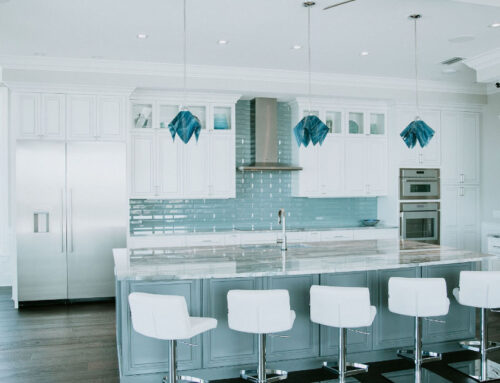If you notice your energy bill is higher than it used to be, it could be that you need to replace some of the insulation in your attic. During winter, an improperly insulated attic can allow heat to escape through your ceilings; in summer, heat can seep in and make it more difficult for your AC unit to keep your house at your desired temperature. Sometimes when insulation is old, one-room may get quite warm while another feels like it’s always cold. Adding or refreshing the insulation will make your unfinished attic much more effective at stabilizing your home’s environment and cutting down your energy bill.
In an unfinished Florida attic, the goal is to have the floor fully insulated while allowing for good air circulation throughout the walls and ceiling. The walls of an unfinished attic should never be insulated because the space would trap too much heat and moisture. When you take the time to go up into your attic to re-insulate, be sure to check that all the air vents are open and that your attic fan (if you have one) is functional.
Prepare for Insulating: Before moving around the attic, bring up plywood planks and lay them across the horizontal joists. You should never step on the areas between the joists, as this could result in you putting a leg through your ceiling.
Next, check to figure out where you need more insulation. There should be about 6” of insulation on the floor on average–bring a ruler with you and check multiple spots throughout the attic. If you notice insulation that looks old and crumbly, that’s a sure sign that you need more. You may also need to re-caulk areas where air can escape from the rooms below, such as around light fixtures or pipes. Weatherstripping should be added around the entryway to seal it as best you can. New insulation can be laid right over the old insulation unless the old insulation is wet from a leak. In that case, you will need to remove the old layers altogether.
Check the Vapor Barrier: If you are completely replacing insulation, ensure a proper vapor barrier is in place. Some insulations come with a facing that is vapor-retardant already, and often foam insulation doesn’t require it. Some varieties don’t have vapor-retardant facing, though, and in this case, before laying the new batts down, it’s essential to put down a polyethylene layer. This will keep moisture away from the sheets of insulation. When laying insulation over old layers, use unfaced insulation.
Laying Insulation: When laying insulation that comes with a vapor barrier, be sure to lay the barrier side down onto the floor. When laying insulation, start at one wall and work your way across the room for the best results. Cut the sheets to fit snugly, but do not compress them when fitting them into the spaces between the joists. Flattening or compressing them decreases their effectiveness. If you’ve got enough, it’s not a bad idea to lay insulation over the joists as well to prevent air from escaping around them.
You may not think about it, but the insulation in your unfinished attic may be affecting the temperature in your kitchen, bathroom, and all other rooms of your home. When you are looking to renovate one of these rooms, you may wish to check the insulation in your attic as well.
The team at West Coast Design Build Florida are your local experts for kitchen and bathroom renovations, as well as the design of outdoor kitchen areas. If you need inspiration, design help, or a professional renovation, call us today.



